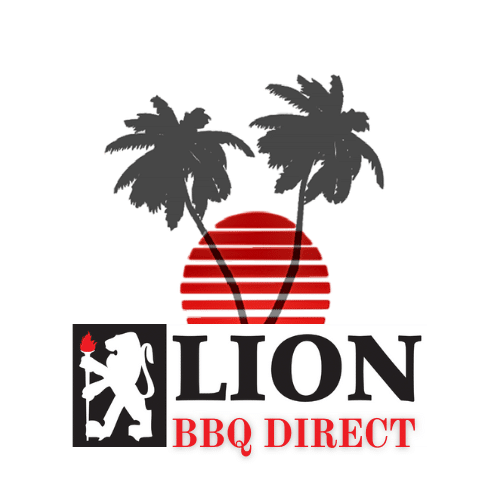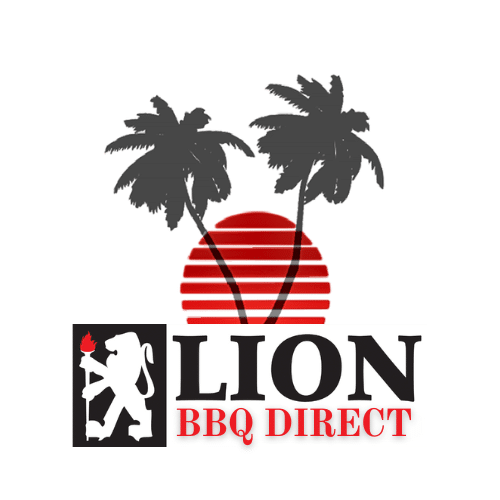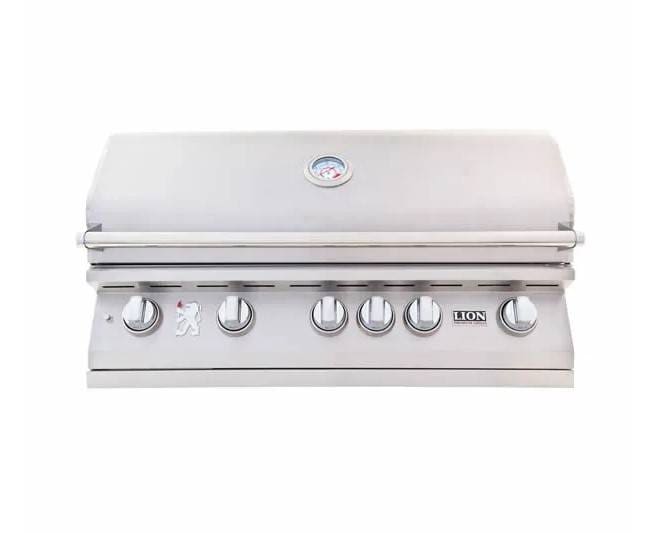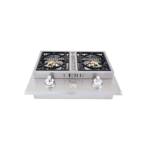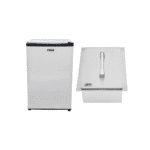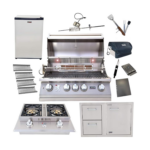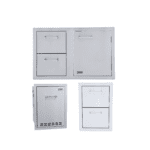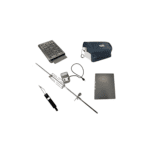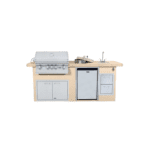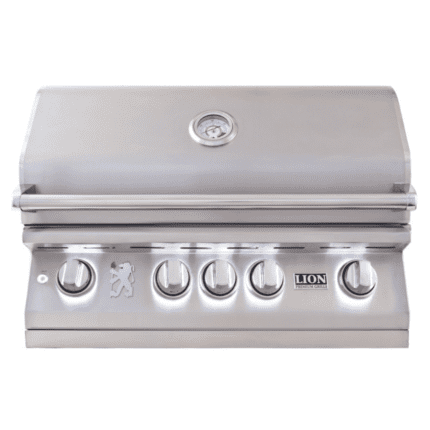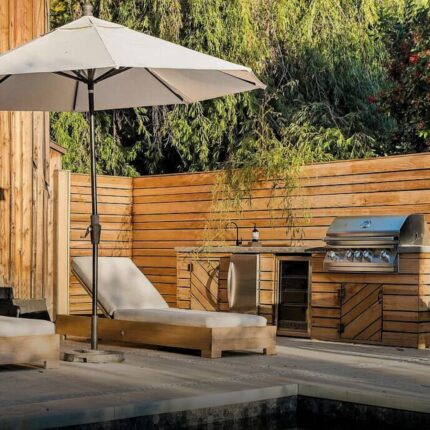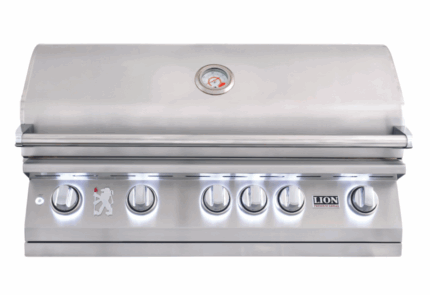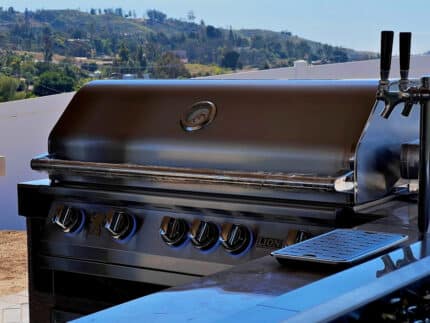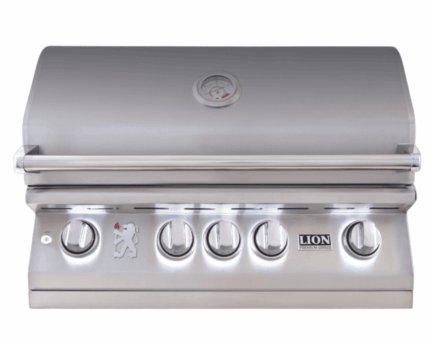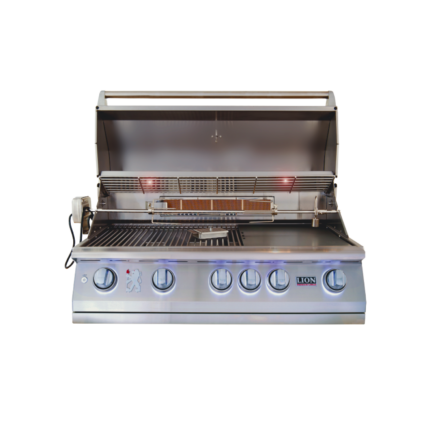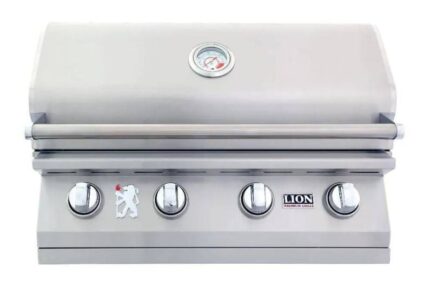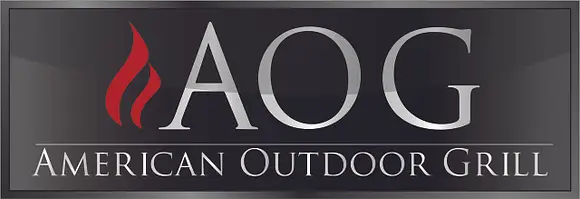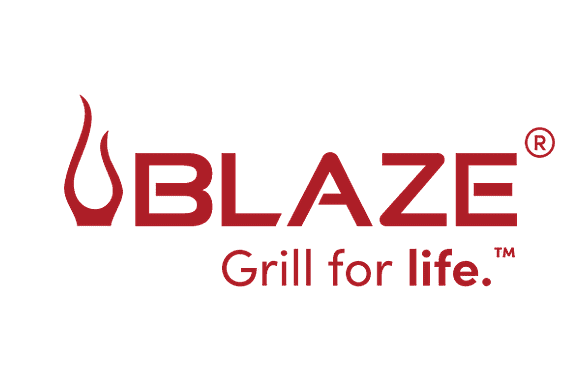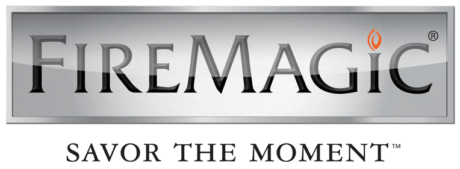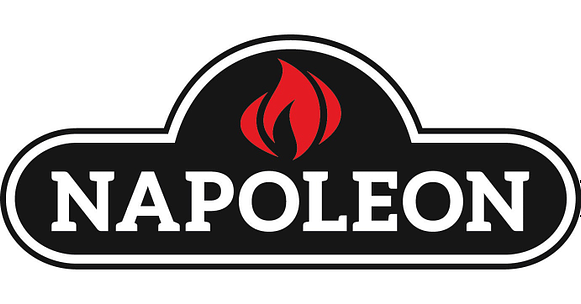

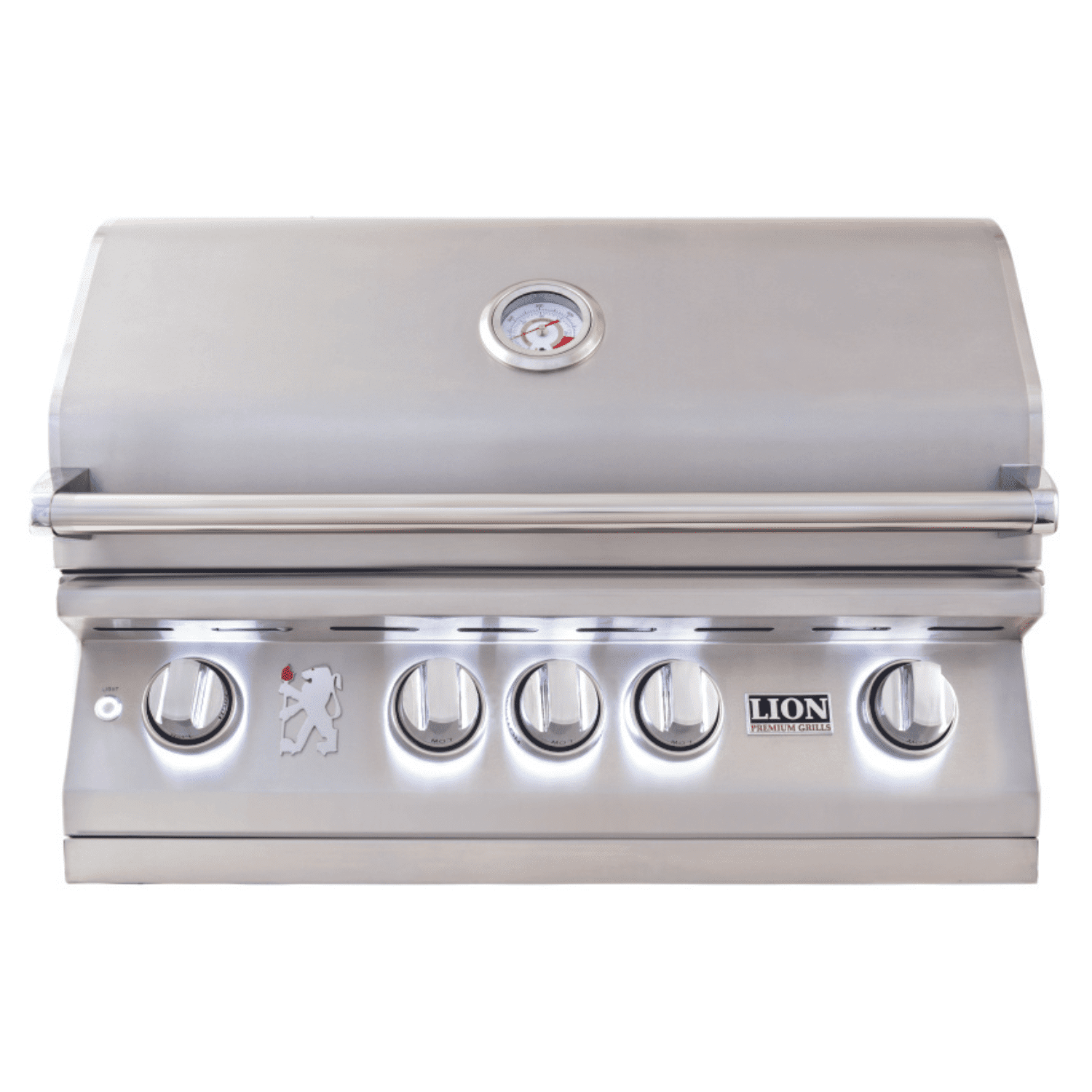

What are the standard cut-out dimensions for installation?
L60000 / L75000: 31″ W × 21½″ D × 9⅝″ H
L90000: 38½″ W × 21½″ D × 9⅝″ H
Always install in non-combustible islands with proper ventilation.
What materials are Lion built-in grills made of?
Every Lion grill features 16-gauge 304 stainless steel throughout the body, hood, frame, and cooking grates. This commercial-grade steel resists rust, corrosion, and discoloration even in coastal climates.
What size gas line do Lion built-in grills require?
A ½-inch gas line is standard for both Natural Gas (NG) and Liquid Propane (LP) models. For longer runs or multi-appliance setups, consult a licensed installer to size the line for adequate BTU flow.
Are the burners made of solid stainless steel?
Yes. Lion uses solid cast stainless-steel burners, not hollow tubes. This design provides better heat retention, consistent cooking temperatures, and long-term durability.
What type of flame tamers do Lion grills use?
Lion grills include stainless-steel flame tamers as standard. For those seeking more even heat distribution, ceramic flame tamers are available as an optional upgrade.
What are the cooking areas for each model?
L60000 / L75000: Approximately 830 sq in total (about 647 sq in main grilling + 183 sq in warming rack).
L90000: Approximately 1,030 sq in total (about 802 sq in main grilling + 228 sq in warming rack).
Do Lion built-in grills include a rotisserie burner?
Yes — the L75000 and L90000 include a 15,000 BTU rear infrared rotisserie burner. The L60000 does not have a rotisserie burner.
Are Lion grills available in both Natural Gas and Propane?
Yes. Every Lion grill is offered in Natural Gas (NG) or Liquid Propane (LP) versions. Conversions can be done with the proper kit and should always be handled by a qualified technician.
What is the ignition system on Lion grills?
Lion uses Quick-Lite valves with push-to-turn knobs for dependable, battery-free ignition. This system ensures quick lighting every time you grill.
Do Lion grills have interior lights or LED knob lighting?
Yes. The L75000 and L90000 models include dual interior halogen lights and LED-illuminated control knobs for night-time grilling. The L60000 does not include lighting.
What kind of warranty does Lion provide?
Lion’s warranty coverage includes:
Lifetime – Burners, stainless housing, and cooking grids
3 Years – Flame tamers
1 Year – All other components (igniters, valves, switches, etc.)
Warranty applies to the original owner for residential use.
What electrical power is required?
Models with interior lights or rotisserie use a standard 120 V outlet for the light circuit and rotisserie motor. Gas burners operate independently of electricity.
How do I properly clean and maintain a Lion grill?
After grilling, run burners on high for 10–15 minutes to burn off residue, then brush grates with a stainless-steel grill brush. Periodically remove flame tamers and burners to clean grease buildup. Wash exterior surfaces with mild soap and water—never use harsh chemicals or steel wool.
Where can I find replacement parts and upgrades?
You can purchase genuine Lion parts and accessories—including burners, knobs, flame tamers, ceramic upgrades, and covers in our parts catagory or give us a call at 951.977.8222
How long do Lion grill burners last?
The cast stainless steel burners in Lion grills are covered by a lifetime warranty and can easily last 10–20 years with proper care. Their solid design prevents rust, clogging, and uneven heat that can happen with cheaper hollow burners.
Can I install a Lion built-in grill under a pergola or covered patio?
Yes — but only if the area is open and properly ventilated. Always provide overhead clearance and airflow as outlined in Lion’s installation manual. Never install directly under an enclosed ceiling or near flammable materials.
How thick is the stainless steel used in Lion built-in grills?
Lion built-in grills use 16-gauge 304 stainless steel, which is thicker and more corrosion-resistant than many competitors that use 18- or 20-gauge metal. This heavier steel improves heat retention and long-term durability outdoors.
What’s the difference between the standard flame tamers and the ceramic upgrade?
Standard stainless flame tamers deflect grease and protect burners. The ceramic upgrade offers superior heat distribution, longer heat retention, and reduced flare-ups — ideal for heavy grillers who want restaurant-level performance.
How much clearance is required for safe installation?
Lion recommends at least 18 inches of clearance above the grill and 6 inches on each side from combustible materials. Proper front and rear ventilation is also required to allow heat and gas to escape safely.
What kind of grease management system do Lion grills have?
Lion grills include a full-width stainless steel drip tray that slides out from the front for easy cleaning. The flame tamers and grease channels guide drippings into the tray to prevent flare-ups.
How heavy are Lion built-in grills?
Approximate weights:
L60000: ~150 lbs
L75000: ~170 lbs
L90000: ~200 lbs
This solid construction reflects the heavy-duty stainless build and cast components.
How long should I let a Lion grill warm up before putting food on it?
With the cast stainless steel burners and heavy stainless construction, letting the grill pre-heat for 8-10 minutes on high is generally sufficient to reach optimal grilling temperature (500°F+), especially under typical outdoor conditions.
Can Lion built-in grills be left outside year-round?
Yes. Lion grills are built entirely from 304 stainless steel, a corrosion-resistant alloy designed to handle rain, humidity, and coastal air. Each grill also includes a custom-fit cover, which should be used when not in use to prolong the life of the finish.
What’s the main difference between cast stainless burners and tubular burners?
Cast stainless burners, used by Lion, are solid one-piece components that resist cracking and corrosion. Tubular burners, common in lower-end grills, are hollow and prone to rust or clogging over time.
